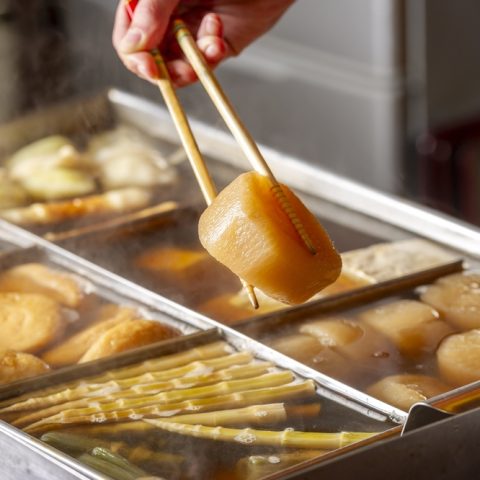
Japan’s culinary landscape is well-known for its variety of choices when it comes to seafood, as the island country provides a geological advantage for access to the freshest fish and other creatures in the ocean. Within their waters lies the heart of Japan’s sushi and sashimi culture, the jewel of the sea, Maguro, famed for its rich and flavourful flesh. Join us as we provide an introduction to Maguro, exploring its varieties, culinary applications, and the cultural significance it holds in Japanese cuisine.
What is Maguro?
Maguro, the Japanese term for tuna, encompasses a diverse range of species, each with its own unique flavor profile. Bluefin tuna, with its buttery richness, takes center stage, while yellowfin and bigeye tuna offer a milder taste. Understanding this spectrum of tuna allows sushi enthusiasts to appreciate the subtle differences that make each type of Maguro special.

“Traditional Style Sushi” by Yu
Serving it up Raw – Sushi and Sashimi
One of the most iconic ways to enjoy Maguro is in its raw form, either as sashimi or nigiri. Sashimi, thinly sliced raw fish, allows the purity of Maguro’s taste to shine. Nigiri, a slice of Maguro atop a small bed of rice, showcases the delicate balance between the fish and rice, often enhanced with a touch of wasabi and soy sauce. For more information on maguro nigiri and other types of sushi that go well with it, check out this blog post on popular sushi to order in Japan!

“Fish Market Maguro” by Jonathan Forage
The Tuna Auctions
The Tokyo Fish Market, officially known as the Toyosu Market, is one of the largest wholesale fish and seafood markets in the world. It is located in the Toyosu area of Koto Ward in Tokyo, Japan. The market replaced the famous Tsukiji Fish Market, which had been in operation for over eight decades, in October 2018. A visit to this fish market, with its famous tuna auctions, provides a glimpse into the world of high-stakes bidding for the finest Maguro. The excitement of the auction floor and the precision involved in selecting top-quality tuna highlight the dedication of those involved in bringing Maguro from the sea to the table.

“Sliced Tuna Bento” by Jason Leung

Fish Auction – Photo Credit: BananaHub
Grading
In the context of Maguro, different levels or grades are often used to classify the tuna based on their quality, size, and other attributes. These grades help buyers and sellers communicate about the value and characteristics of the tuna being traded. The grading system can vary, but it often includes factors such as fat content, color, and overall quality. Here are some common terms used to describe different levels of Japanese tuna:
- Otoro
Otoro is the highest grade and is prized for its exceptional marbling and high fat content. This part comes from the belly of the tuna and is often the most expensive. The texture is buttery, and it melts in the mouth, delivering a rich and luxurious flavor. - Chutoro
Chutoro is the medium fatty tuna, located between the akami (lean) and otoro sections. It has a good balance of fat and lean meat, offering a rich flavor without being as fatty as otoro. Chutoro is highly sought after for its exquisite taste and texture. - Akami
Akami refers to the lean, red meat of the tuna. It is the least fatty part and is often darker in color. While it may not be as tender or rich as otoro or chutoro, akami has a distinct flavor and is commonly used in sushi and sashimi.

“Seared Tuna” by Taylor Grote
Creative Culinary Applications
While Maguro shines in its raw form, it also lends itself to creative culinary applications. Tuna tartare, Maguro tataki (lightly seared and thinly sliced), and innovative sushi rolls showcase the versatility of Maguro, appealing to those seeking new and exciting culinary experiences.
Sustainability and Responsible Consumption
With concerns about overfishing and the sustainability of tuna populations, there is a growing movement to promote responsible consumption. Some sushi establishments are opting for alternative, more sustainable sources of Maguro or supporting initiatives that focus on ethical fishing practices.

“Maguro Bowl” by Hiroko Yoshii
Whether savored in its purest form or experienced in innovative dishes, Maguro stands as a symbol of Japanese culinary excellence. If you need some suggestions on where to find some quality maguro, check out a list of recommendations from Arigato Travel at the end! Make sure to try out any of these places, and just Maguro in general during your next trip to Japan!
Our Recommendations For You
Feature photo credit: Big Dodzy
Be sure to book our Classic Tsukiji Breakfast Tour to try the best maguro and all the other seafood Tokyo has to offer!




